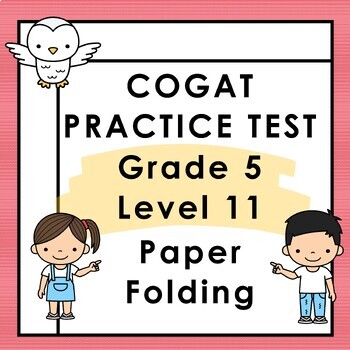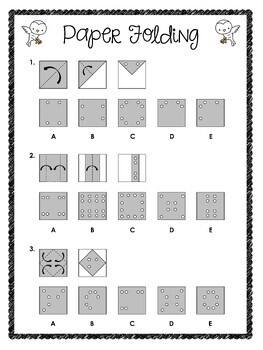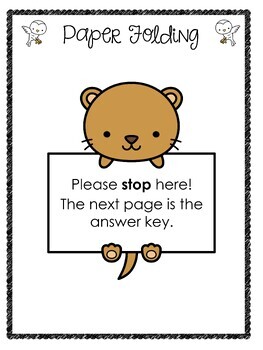CogAT Practice Test - Paper Folding - Grade 5 Level 11 - Gifted and Talented
- Zip
- Easel Activity
- Easel Assessment
Description
This practice test targets the CogAT Paper Folding question type and includes 16 questions similar to the Grade 5 Level 11 CogAT test (pdf, digital activities, and self-grading quizzes).
This resource includes the following practice test options:
1. PDF - Print
The test prep includes 9 pages that are embellished with cute snow owls and otters:
- Practice test with 16 questions (5 pages)
- Prompt asking your student to stop before moving on to the answer key (1 page)
- Answer key with explanations (2 pages)
2. Self-Grading Quiz: Easel Activity - Assign online
- Easily assign the test prep pages online and review performance without having to manually grade it.
- Your scholars can complete and submit the test prep online.
- Students choose the correct answer to multiple-choice questions and check their answers with immediate feedback.
- Review auto-graded responses: View classroom performance by question and by student, without having to manually grade it!
3. Self-Grading Quiz: Easel Assessment - Assign online
- This is a self-grading multiple choice quiz. Students complete one multiple-choice question at a time. They have to make an answer choice in order to proceed to the next question. Once a student selects an answer, they’ll receive immediate feedback if their answer was correct or incorrect.
- Review auto-graded responses: View classroom performance by question and by student, without having to manually grade it!
Please see my other CogAT listings here:
https://www.teacherspayteachers.com/Store/Engage-In-Learning-Charlotte-Clemm/Category/CogAT-498484
CogAT Practice Test - Verbal Battery
CogAT Practice Test - Quantitative Battery
CogAT Practice Test - Figure Matrices
EASEL BY TPT
What are Easel Activities?
- You can assign assignments online (no need to print worksheets).
- Students can work on assignments and submit them on their devices.
- You can watch students’ real time progress by clicking the refresh button and provide feedback online.
- You can make changes to all Easel activities, for example, by deleting pages or adding text boxes and images.
What are Easel Assessments?
- Easel Assessments are self-grading quizzes.
- You will receive a report with individual student and class-level data, making it easier to understand comprehension and differentiate instruction.
- Your students receive immediate feedback on whether their answer choice was correct. After they complete the assessment, they are provided with a report about their results and the percentage of the questions they got correct.
- You can make changes to Easel assessments, for example, by shuffling questions.
How teachers assign Easel resources (activities and assessments):
Assigning Easel activities and assessments is very simple:
- Generate a link and email it directly to your students OR
- Generate a link and assign it through Google Classroom or your Learning Management System
How students access Easel resources (activities and assessments):
- Students click on the link provided by you either through email, Google Classroom, Canvas, or through another LMS of your choice.
- Students will log in with an email address and type their name. They enter their name, so you can keep track of your students’ submitted work.
- That’s it! Once a student completes these two steps, they can get working on their assignment in Easel.
Click here for more information on how to use Easel (it made my life so much easier!):
https://blog.teacherspayteachers.com/how-to-use-easel-by-tpt/
Clipart Acknowledgement:
Bunny on a Cloud (https://www.teacherspayteachers.com/Store/Bunny-On-A-Cloud)
Thank you so much!
Enjoy,
Charlotte





